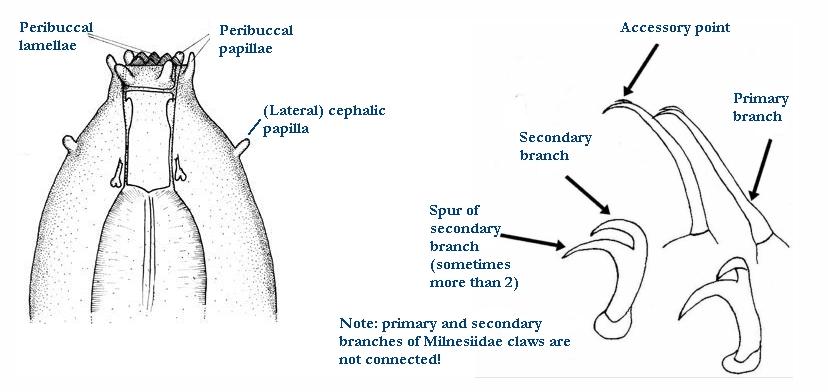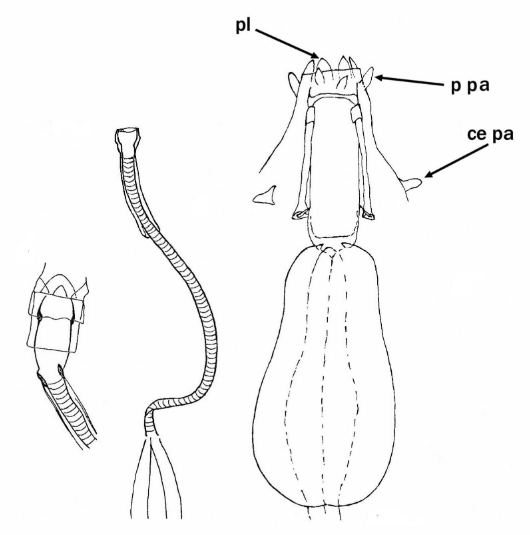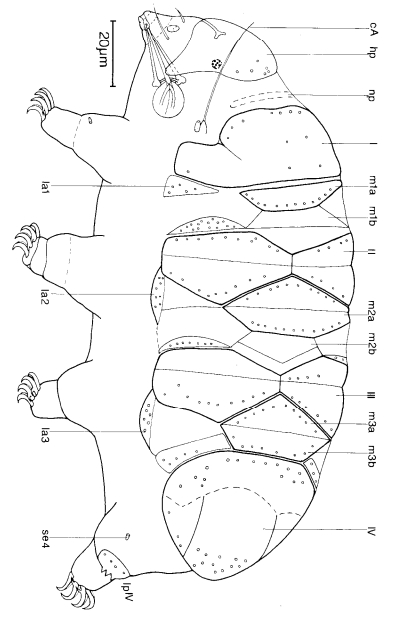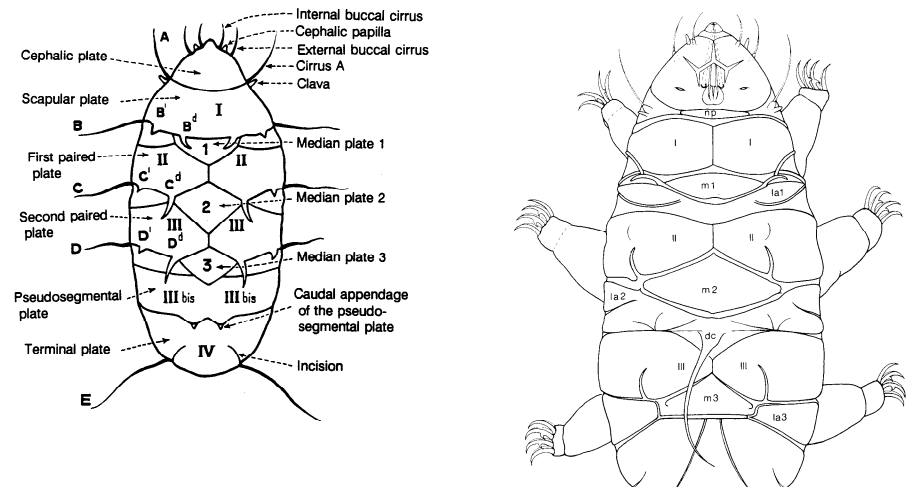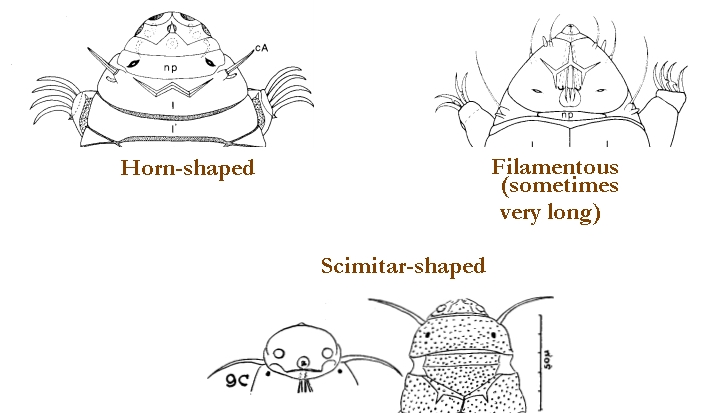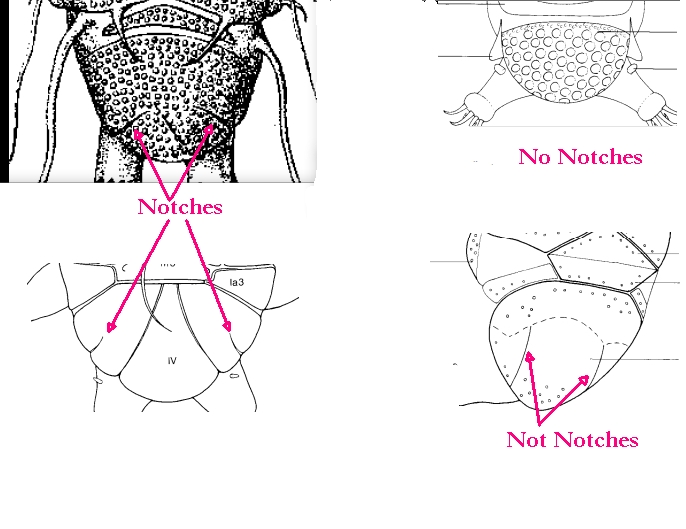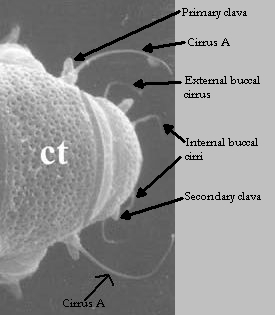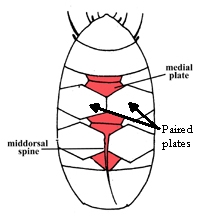Macrobiotidae

Macrobiotidae from Thulin 1928: “Fam. Macrobiotidae zeichnet sich dadurch aus, dass Sinnesanhänge am Kopfe fehlen. Die Krallen sind zweihakig. Die hintere an jeder Extremität kann mehr oder weniger vollständig in Basal- und Terminal-kralle aufgeteilt sein, die vordere ist dagegen niemals in dieser Weise differenziert. Die Länge und Weite der Mundröhre variiert erheblich innerhalb dieser Familie, […]
Insuetifurca
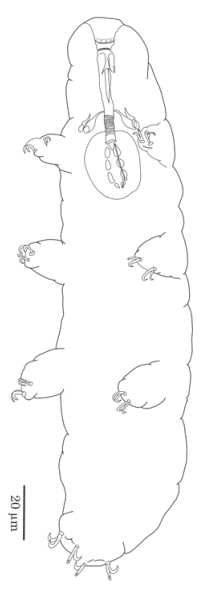
Genus description from Guidetti & Pilato 2003: “Diploclaws of a slightly modified ‘hufelandi type’ with the basal portion subdivided into a very short stalk and a large distal portion less sclerified than the common tract; lunules present; buccal-pharyngeal tube subdivided into an anterior rigid portion (Provided with a ventral strengthening bar) and a flexible caudal […]
Famelobiotus
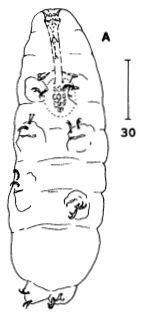
Genus description from Pilato et al. 2004: “Genus of family Macrobiotidae; claws of hufelandi type; bucco-pharyngeal apparatus a variant of the Macrobiotus type; buccal tube rigid with ventral lamina; mouth terminal with 10 peribuccal lamellae. Double system of transverse ridges present in the caudal portion of the buccal cavity. Anterior system has no homology with […]
Calcarobiotus
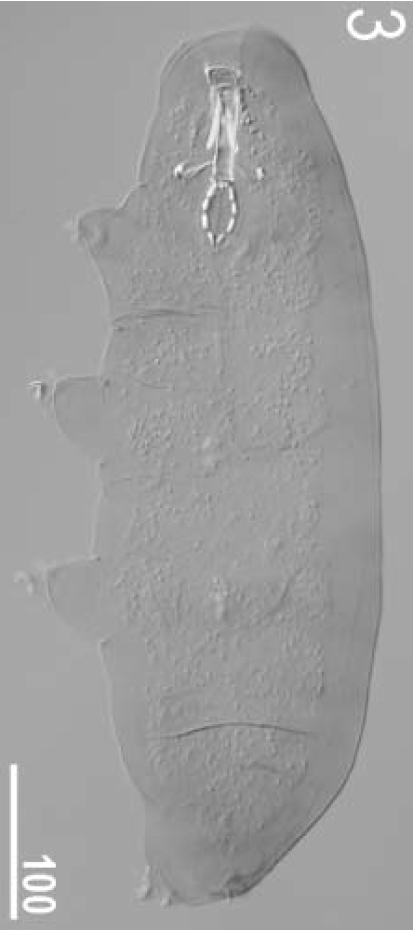
Genus description from Guidetti & Bertolani 2001: “Claws of Calcarobiotus type, with an evident thin stalk, an evident wide transverse septum dividing the basal portion from the rest of the claw, wide basal portion of the claw with a large distal part (bearing or not spurs); main and secondary branches (at least on the first three pairs […]
Biserovus
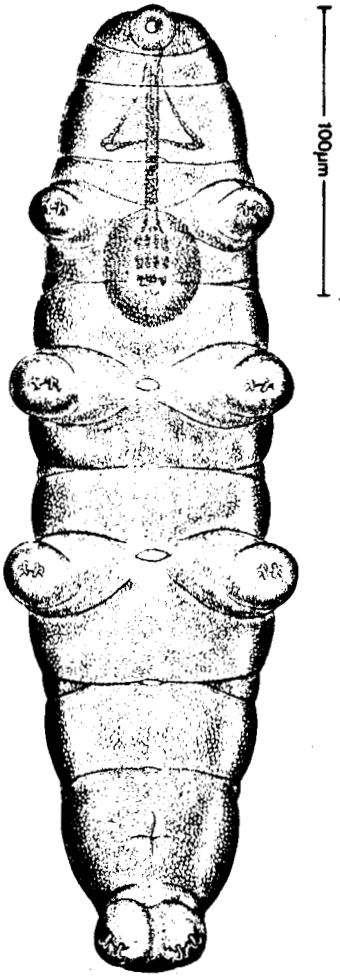
Genus description from Guidetti & Pilato 2003: “Diploclaws similar to those of Pseudohexapodibius, formed by a common tract and a main and a secondary branch. A differentiated basal portion less sclerified than the common tract is lacking. Lunules absent. The buccal-pharyngeal tube is subdivided into a rigid anterior portion with a ventral strengthening bar and a […]
Minilentus
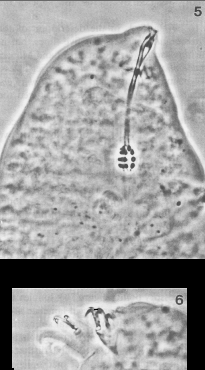
Genus description from Guidetti and Pilato 2003: “Diploclaws of the ‘hufelandi type’. Lunules present. Buccal-pharyngeal tube subdivided into a rigid anterior portion with a ventral strengthening bar, and a posterior flexible portion that is annulated because of the presence of a spiral thickening. Peribuccal lamellae absent.” Citations: Guidetti R, Pilato G. 2003. Revision of the […]
Paramacrobiotus
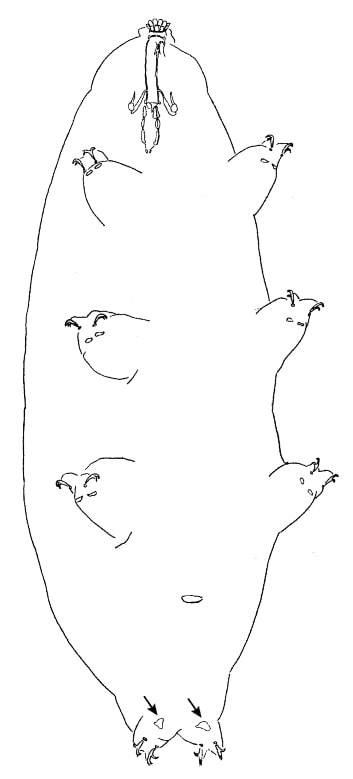
Genus description from Guidetti et al. 2009: “Macrobiotids with Y-type claws, cuticle smooth and without pores; mouth ring with ten evident peribuccal lamellae; buccal armature showing ventrally and dorsally a posterior crown of strong triangular or bicuspidal teeth followed (at least dorsally) by three robust transverse crests; large buccal tube; three clearly rod shaped and elongated macroplacoids; […]
Minibiotus
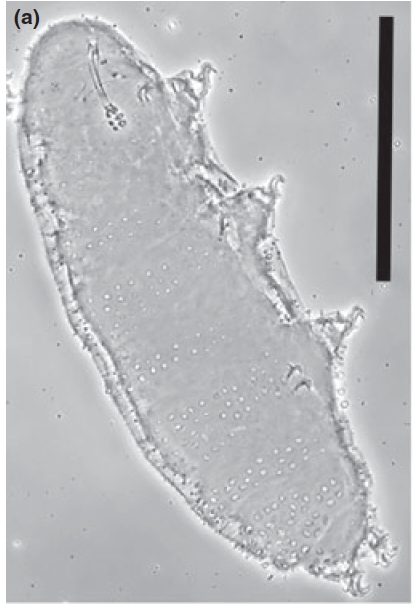
Genus description from Schuster et al. 1980: “Ten peribuccal papulae present; without buccal lamellae. Mucrones present; development of infrabuccal baffles unknown. Buccal tube short, rigid, without spiral thickenings. Pharynx contains apophyses, macroplacoids, and sometimes microplacoids. Cuticle with or without pores, dorsolateral spines sometimes present. Two double claws of each leg of similar size and shape; sequence 2,1,1,2; […]
Mesobiotus
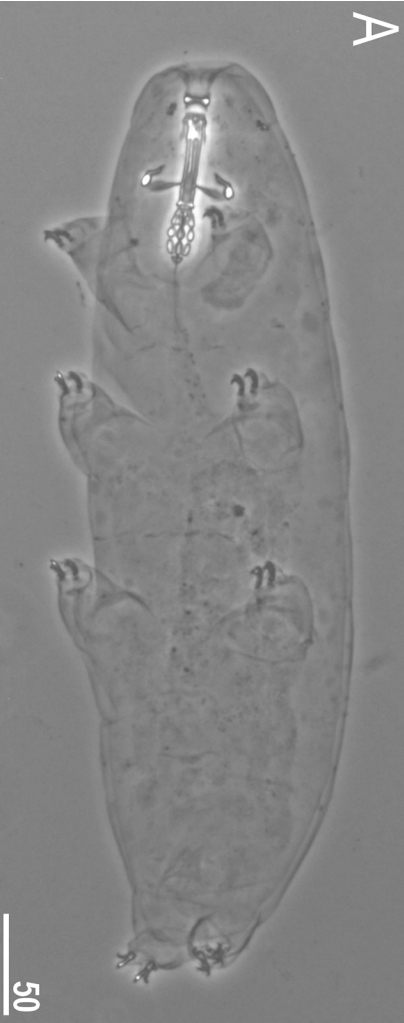
Genus description from Vecchi et al. 2016: “Macrobiotids with Y-type double-claws with a common tract characterised by an internal septum defining a distal part. Cuticle without pores. Mouth ring with 10 peribuccal lamellae; rigid buccal tube; three roundish macroplacoids arranged along a curved line; microplacoid clearly close (less than its length) to the third macroplacoid. Eggs […]
Macrobiotus

Genus description from Schultze 1834: “Corpus elongatum, depresso-cylindricum, in decem segmenta distinctum. Pedes octo, alternis segmentis a quarto ad decimum affixi. Caput antennis destitutum, oculi duo.” Translated: The body is an elongated, flattened cylinder in ten segments. Eight feet on alternate segments from the fourth to the tenth. No antennae on head, two eyes. Genus […]




